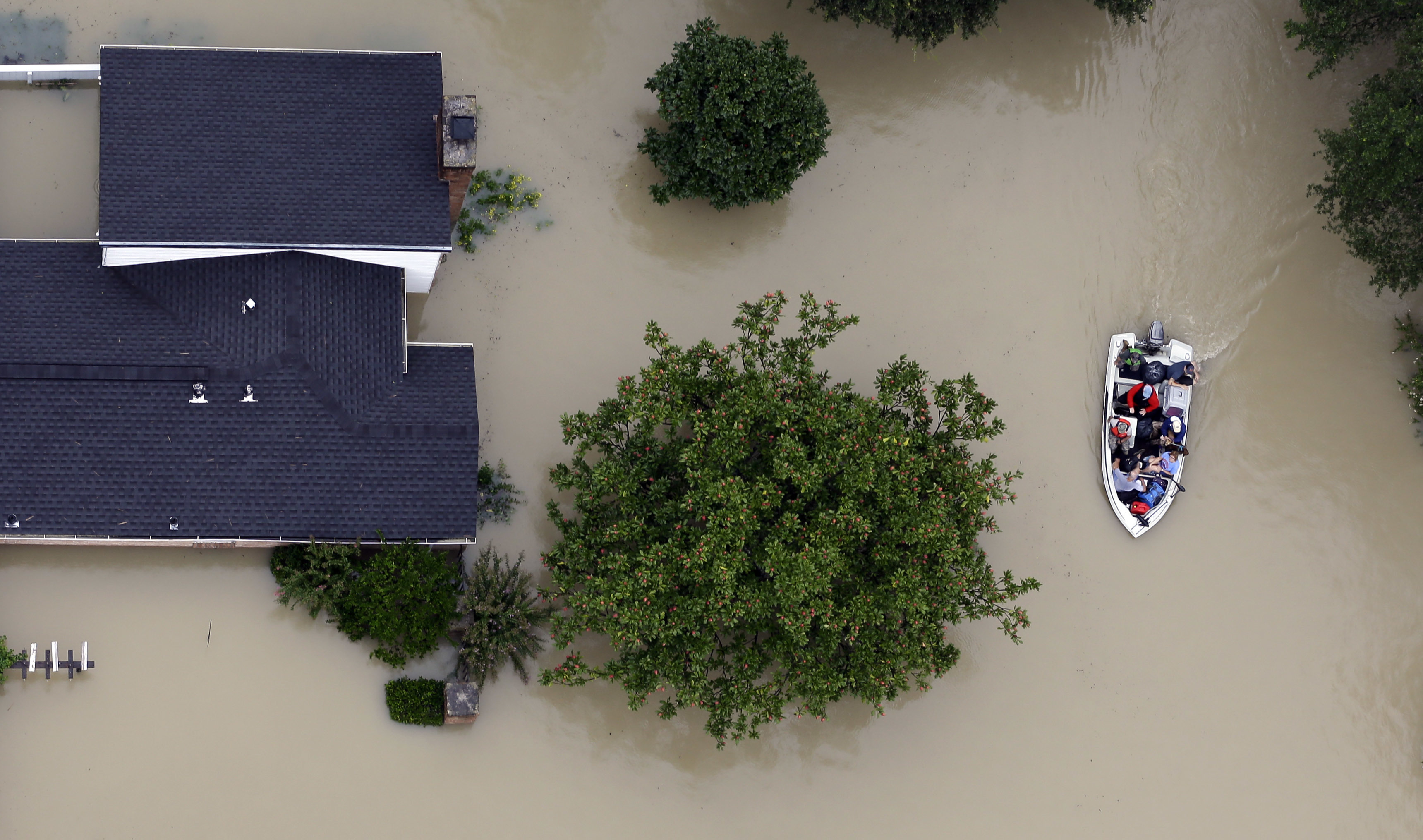Harvey is just the beginning. America must get ready.
How America can get ready for the superstorms of the future


Tropical storm Harvey has finally moved on from Texas. It dumped over 50 inches of rain in some areas of Houston, making it the worst rainfall event in U.S. history. Flooding damage will be in the tens of billions of dollars at the very least.
Now the process of cleanup and rebuilding begins. But it also raises one important question: How can we prevent such disasters in the future?
Unfortunately, there will be no completely avoiding some damage. But there are many steps we can take to increase American resilience, and more importantly, head off even worse disasters in the future.
The Week
Escape your echo chamber. Get the facts behind the news, plus analysis from multiple perspectives.

Sign up for The Week's Free Newsletters
From our morning news briefing to a weekly Good News Newsletter, get the best of The Week delivered directly to your inbox.
From our morning news briefing to a weekly Good News Newsletter, get the best of The Week delivered directly to your inbox.
To start with, Harvey was almost certainly strengthened and intensified by climate change. Unusually warm waters both at the surface and deeper in the Gulf of Mexico allowed the storm to surge from a Category 1 to a Category 4 just off the Gulf Coast, something that is extraordinarily rare. Warming also seems to have disrupted normal wind patterns, which might be why Harvey stalled directly over Houston for days, then wandered back out to sea, only to make landfall again on Wednesday. That combination of laziness and strength is what allowed it to dump over four feet of rain.
But we must remember that so far the world has only experienced about one degree Celsius of warming. Climate disasters after two degrees of warming will probably be more than twice as bad as they are now, because the relationship between temperature and atmospheric water vapor capacity is nonlinear (that is, one unit of temperature increase means greater than one unit of increase in maximum humidity). More water-saturated air means more powerful storms — and that's leaving aside slower-moving problems like sea level rise, glacial melt, disruptions to agriculture, chronic extreme heat, and so on.
America must therefore undergo a crash decarbonization program as fast as possible, while rejoining the world diplomatic effort to coordinate emissions reductions. This wouldn't prevent future Harveys, but it would head off far, far worse future disasters.
But, as we see today, our past dithering and procrastination has already doomed us to a much higher background probability of extreme weather and other problems. Simple momentum alone will carry us perhaps another half-degree, or maybe more. Therefore America also requires a concurrent crash program of infrastructure modernization and resilience policy.
A free daily email with the biggest news stories of the day – and the best features from TheWeek.com
Some of this fits in quite naturally with decarbonization. Renewable energy is much more distributed and decentralized than large coal or natural gas plants, and therefore more resilient. Spreading power generation out means less vulnerability to single sources being knocked out. Similarly, a smart grid would be much less prone to cascading power failures and better able to reroute power around damaged areas.
A huge national mass transit program — a vital necessity to reduce transportation emissions — would also help. America's love of cars and highways has made many cities impossible to evacuate in a short time, Houston very much included. (That is why the mayor decided against a general evacuation order, rightly fearing that people would drown in vast traffic jams.) Trains have several orders of magnitude greater people-moving capacity than highways, and can ease congestion on other transport infrastructure.
In drought-prone areas like the Southwest, efficiency of water use must be sharply increased, from homes to farms, and federal water projects must be managed in keeping with this goal, not simply for peaking power. (This is already well started.)
Finally, flood protection deserves special attention. The flooding in Houston was seriously worsened by decades of sprawling growth paving over prairie and wetland, and by people building directly in flood-prone areas — both of which were fueled by the dysfunctional federal flood insurance program. This policy subsidizes flood insurance for homeowners, which while a decent idea in the abstract, has in practice fueled massive building in exceptionally risky locations. (Houston even allowed people to build inside the limits of its flood control reservoirs, with predictable results.)
Federal programs need to stop incentivizing sprawl in the floodplain, and instead push for higher-density development in sensible areas — in both the South and in built-up coastal cities, since skyrocketing real estate prices in places like New York and San Francisco are a big engine of sunbelt sprawl. They should also push for the use of water-resistant construction, and new absorbent surface materials which can simulate soil to some extent. Old flood maps need to be updated with realistic estimates of where flooding is likely to take place, and structures in doomed locations cut out of the program (with perhaps their owners given a relocation grant). Finally, federal agencies should work with states and cities to sharply upgrade drainage and protection infrastructure.
All this is the briefest of napkin sketches. But it gives a sense of the vast effort that is going to be required, starting as soon as possible. Every hour we delay will only add to the already-immense cost. There is no escape; the only way out is through.
Ryan Cooper is a national correspondent at TheWeek.com. His work has appeared in the Washington Monthly, The New Republic, and the Washington Post.



